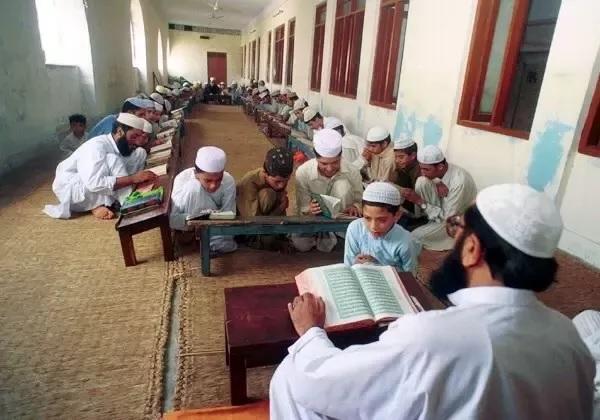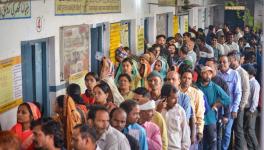Madrasa Discourses: Muslims Want Seminaries Upgraded, Face Political Pushback

Representational image. I Image Courtesy: Quora
A recent ‘expose’ has pulled the madrasa as an institution back into focus. A news report, cunningly titled ‘Madrasa Hotspots’ by India Today’s news director Rahul Kanwal has portrayed madrasas as wilful violators of the ongoing lockdown to prevent the spread of Covid-19. It made their very existence at this point look like a criminal act, done with an intent to harm others. This and similar untruths are not really new. Zealots in the media portrayed the revivalist Muslim outfit, Tablighi Jamaat, which has no political interests whatsoever, in a similar light not long ago.
Madrasas are educational institutions in which millions of students are enrolled across the country. When the lockdown was announced, they, like any other residential school, college or university, and others, were caught off guard. Both their students and the teachers are stuck in them since then.
However, the mainstream media has singled to portray madrasas as having metastasised into an anti-national platform. During the term of the first BJP government that climbed to power at the Center, the Home Minister, LK Advani—now forced into premature retirement—had claimed that his government will publish a White Paper on madrasas and their dalliances with terror funding. However, after years-long efforts, his government was unable to deliver any proof of this sort and the white paper fell into a dark hole.
Ebrahim Moosa, professor of Islamic studies at the University of Notre Dame’s Keough School of Global Affairs, says in his path-breaking book, What is a Madrasa, “Madrasas specialise in the study of classical theological and legal texts as well as commentaries on the Muslim scripture, the Qur’an. They place special emphasis on studying the life and teachings of Islam’s prophet, Muhammad, and are engrossed in complex details as to how rules and morals should regulate public and private conduct according to religious norms. All the secondary disciplines that are needed to gain proficiency in these primary fields of study are also taught, such as Arabic and Persian grammar and literature, rhetoric, logic, and philosophy, among other subjects.”
He writes of the madrasa provides a student the “training wheels” required to inculcate the “rhythms of ritual, learning, piety into the body through daily practice”. When these practices become second nature, he further says, the student can be said to have inculcated a life of subservience to God’s commandments. “Madrasa teachings insist that knowledge can have a proper effect only if the receptacle of knowledge, the human body, especially the heart is properly conditioned to receive such learning. Abstaining from sin makes it possible for knowledge to illuminate the heart and mind with wisdom and insight based on the book learning the student already acquired,” Moosa writes.
However, in India, seminaries are run differently. They have included subjects such as science, mathematics and the social sciences, besides Hindi and English in their curriculum. Many are affiliated with universities for credits in the social sciences and language courses. Many students from the country’s dusty madrasas have done very well in academia, even qualifying in the IAS exams.
For the Muslims, naturally, madrasas are an important resource: they provide inexpensive—completely free of cost—education to the poorest students. Most also provide free food and lodging, besides essential items to their students.
Mohammad Ishaque, Professor of Islamic Studies in Delhi’s Jamia Millia Islamia University tells me that madrasas are a godsend for the indigent Muslim families. “Had there been no madrasas, millions of deprived Muslim children would have seen no educational institution from the inside, let alone being able to study in one. Madrasas may not offer the best education, however they are free or highly subsidised and many who study there will do very well...”
People forget that Indian Muslim communities do not have the institution of an orphanage: this also makes seminaries a save haven, even for homeless children. For this reason, one finds young ones crammed into madrasa dormitories. Also, even in a madrasa in Delhi, you would hardly find a pupil from this city or its neighbourhood. Most of them actually come from far-off places in Bihar, Bengal, Assam and, in some, from Uttar Pradesh.
Dr Kaukab is a madrasa graduate who then studied at a Unani Medical College in Delhi. “Had there not been a madrasa, my dream of a higher education would have come a cropper. Without having to pay a penny I could study and qualified in the competitive examination,” he tells me. Luckily, he cracked the test in the first attempt.
A Home Ministry report locates around 10,000 functioning in Uttar Pradesh, a similar number in Kerala, 6,000 in Madhya Pradesh, 3,500 in Bihar, 1,825 in Gujarat and 1,780 in Rajasthan. Yet, this is a conservative, and possibly, old estimate. The numbers are uncertain, but there must be more than 50,000 madrasas in India today.
For more than two decades, madrasas have been demanding modernisation and inclusion of modern subjects in their curriculum. Many have included the courses taught in mainstream schools until the middle school level, but very few can afford to take this into senior levels. Many, particularly the Barelwi madrasas, have adopted the NCERT syllabus until the higher secondary level so that their students can appear in the Class X board exam.
Nonetheless, most madrasas are still stuck in the past and teach Dars-e-Nizami or the Nizami syllabus, originally devised in the 18th century by Mulla Nizam Uddin As Sihaalwi. Nizam Uddin belonged to the Farangi Mahal madrasa that was the main madrasa in the Indian subcontinent before the establishment of the Darul Uloom at Deoband in Uttar Pradesh in 1866 by Muhammad Qasim Nanautavi, a cleric and freedom fighter.
Much of what is taught in madrasas is outdated and need to be revamped. The Dars-e-Nizami syllabus is often rather blindly pursued by madrasa teachers and managers, who give little thought to its relevance. Some strongly resist the pressure, including from governments, to completely revamp the syllabi and streamline it.
Jamal Malik, professor of Islamic Studies at the University of Erfurt, Germany, notes in his book, Madrasas in South Asia: Teaching Terror?, that “streamlining is often dictated by the postulates of a ‘global modernization’ assuming that there is a ‘universalizing code’ through which modernity unfolds itself. Such a paternalistic and arrogant assumption is at the same time informed by a calculated expansion of the state-domain to previously untouched areas.”
He notes: “Against the backdrop of the state’s tendency to expand its homogenizing notion... we need to appreciate the role of madrasas in non-colonial, but not necessarily precolonial, traditional societies, in which they command a high degree of autonomy. Madrasas offer free education, often for students with meagre provisions, and provide learning which seems to be tailored to the surrounding culture”.
“What they taught during the 18th century was relevant then, but no longer,” says Mohammad Ishaque, who feels that madrasas would “serve the society a lot better” had they inducted more relevant and modern syllabi. Everything from literature to philosophy or even fiqh (jurisprudence) has undergone a metamorphosis, he says, so there is an urgent need for modernisation of madrasa syllabi.
Moosa himself studied in some India’s leading madrasas including the Darul Uloom at Deoband and the Nadwatul Ulama in Lucknow. He finds that the madrasas are not as effective today as they should be though they are providing basic literacy. “I think they are ineffective in terms of providing guidance, moral or political. However, when they get involved in political guidance it is usually bad one because they do not understand the world they are operating in. There is a huge gap between their understanding of politics, locally or globally, and also they utterly lack the understanding of big scientific questions,” he says.
To be more effective, Moosa says, their syllabus needs to be upgraded on an urgent basis. In 2017, Moosa launched his university’s Madrasa Discourses Project, to train madrasa pass-outs in pluralism, modern science, technological advances and new philosophies. The aim is to upgrade the literacy, including in Islamic theory and jurisprudence, and to expose students and pass-outs to a wider range of literature, and a scientific bent of mind. Without that, Moosa rightly feels, the madrasa as an institution will neither upgrade its own Islamic literacy nor be able to grasp what is happening in its surroundings.
The author is a writer and columnist. The views are personal.
Get the latest reports & analysis with people's perspective on Protests, movements & deep analytical videos, discussions of the current affairs in your Telegram app. Subscribe to NewsClick's Telegram channel & get Real-Time updates on stories, as they get published on our website.
























